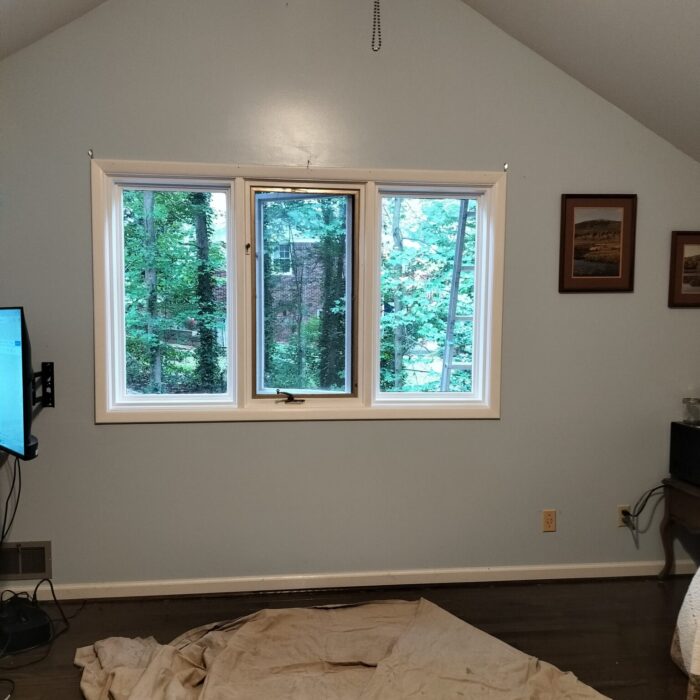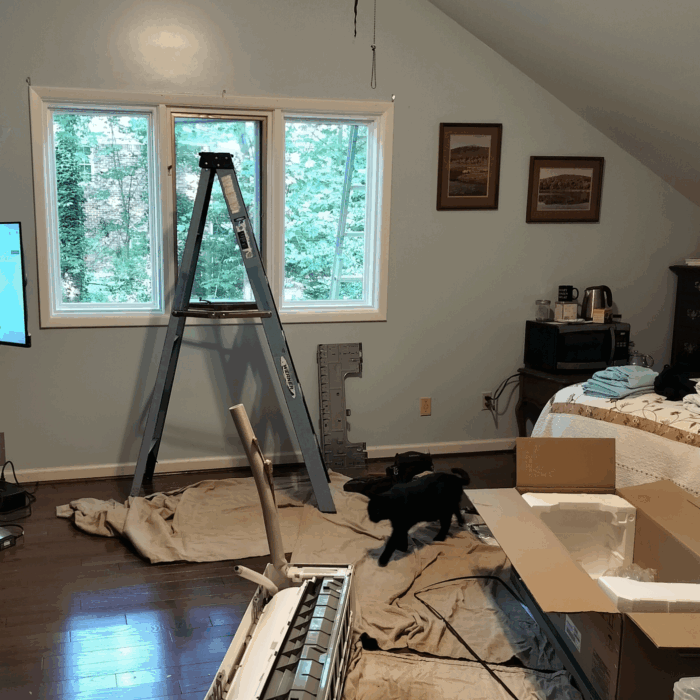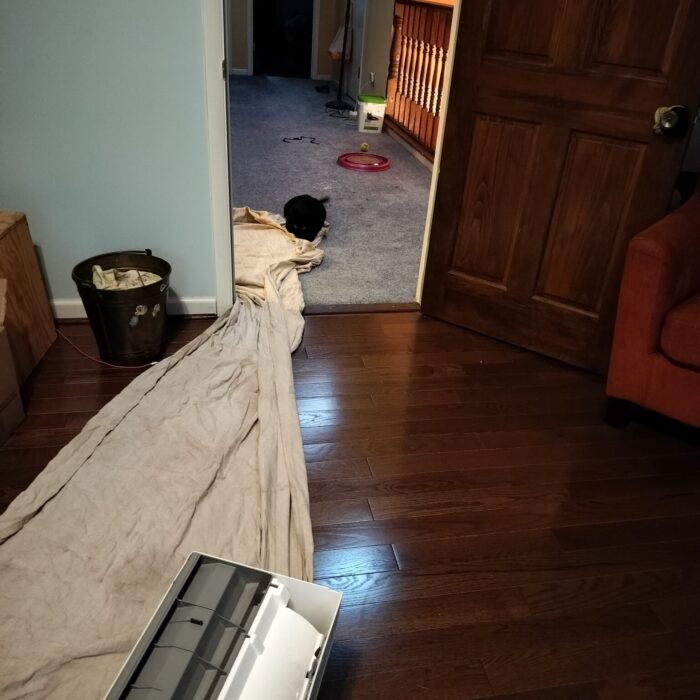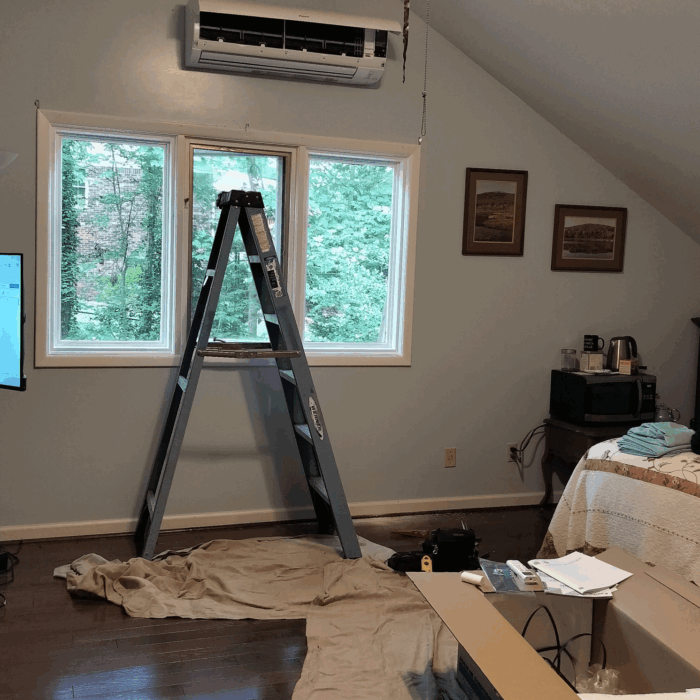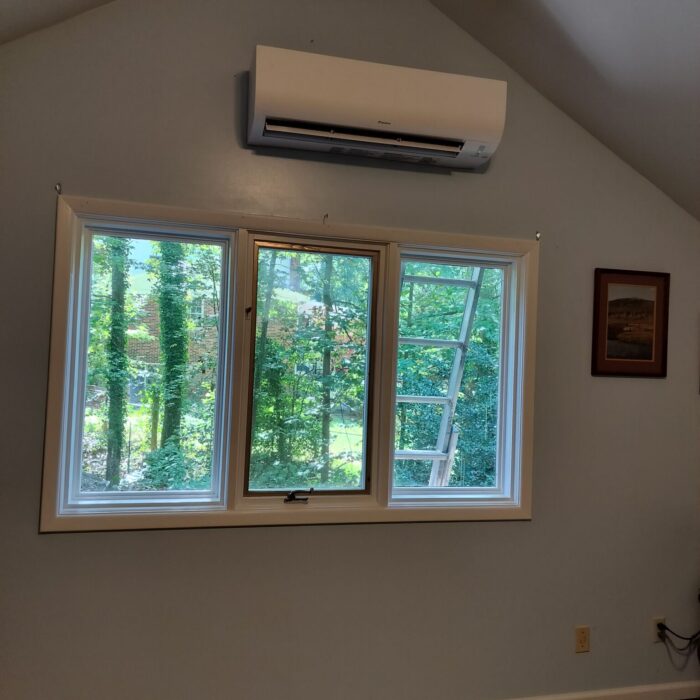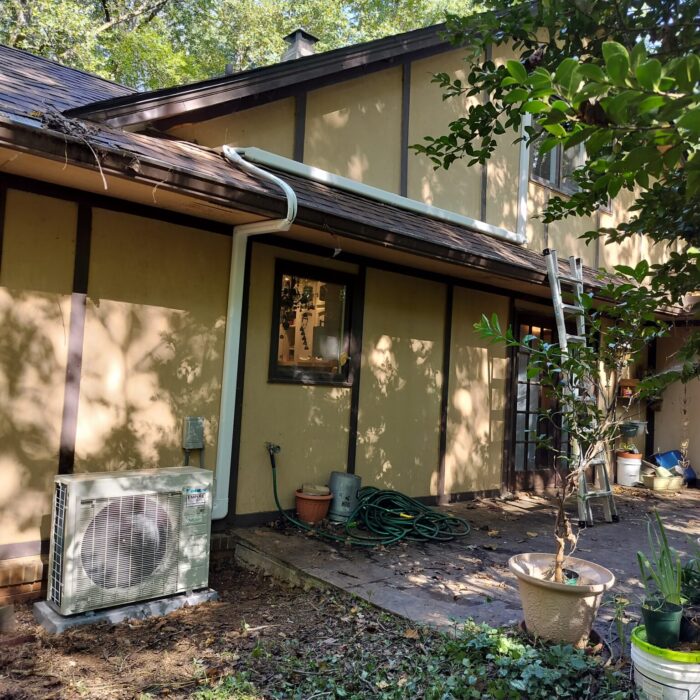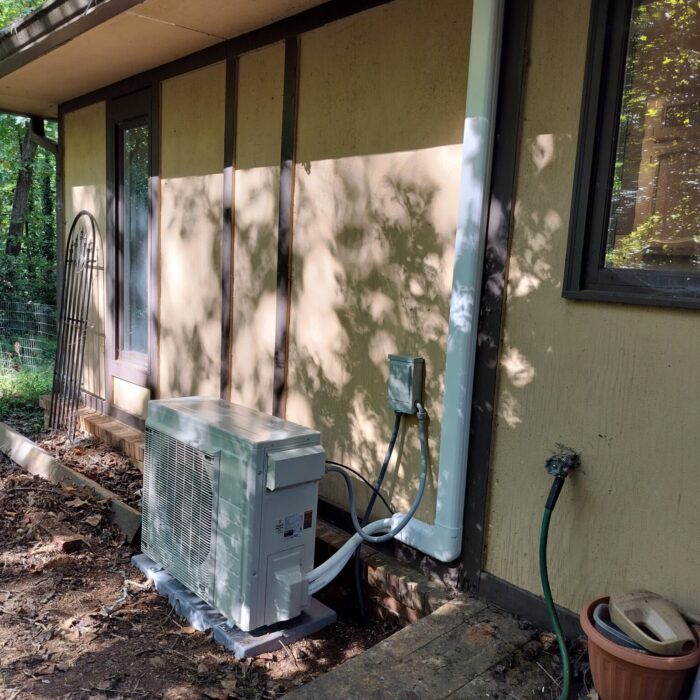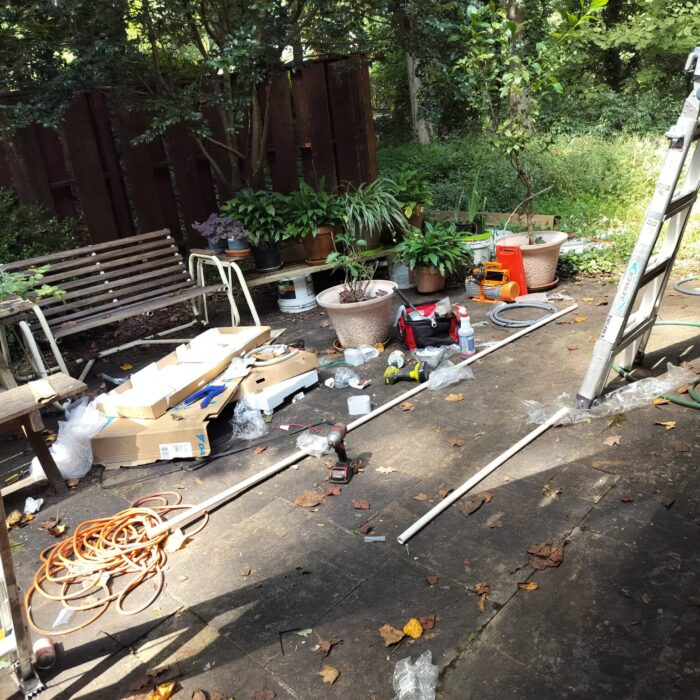Month: October 2025
Hot Office, Cool Solution: Selecting a Ductless Mini-Split Heat Pump

Background Information
The Home
A two-story 5BR/4BA home with a partially finished basement, in metro Atlanta
The Residents
Two working adults, two retired elders, one cat
The Scenario
One of the residents uses an upstairs office, and air vents are usually closed to concentrate conditioned air on the first floor where the elders live, and conserve energy in a large house with a single thermostat zone. With the door closed for noise and privacy, the office gets uncomfortably hot or cold, seasonally.
Decision Factors
How important was the upfront cost in your decision to purchase the heat pump?
Upfront cost is significant; however, other options — such as rezoning our ductwork to allow heating and air conditioning to be used differently in separate parts of the house — also had high upfront costs, and we value efficiency. We were trying to allow a single room, at the maximum extent of the ductwork two floors up from the circulation fan, to be made more comfortable without having to overwork the whole-house system, which would also be costly.
How much did the availability of federal tax incentives or rebates influence your choice?
We prioritized getting the job done in 2025 because of the availability of federal tax incentives. A ductless heat pump system is by far the best solution for this setup, so we likely would have made this choice, at a higher net cost, and would have had to wait longer to save the money to fit it in the budget.
How important was comfort (heating/cooling performance, consistency, etc.) in your decision?
Comfort was the primary factor! On days when the office is at an unhealthy temperature, the alternatives are to try to work in a noisier and more distracting part of the house, to attempt to find a coffee shop or other climate controlled public place to work, or to commute downtown to the office.
Timing & Research
When did you first start thinking about making this upgrade, and how long did you spend researching before moving forward?
We were aware of this technology and its benefits for single-room heating and cooling from a house we rented in the past having similar units in the upstairs bedrooms. We moved into the house in mid-2023 and immediately discovered that cooling was driving high electric bills. We also discovered that, because of the layout of the ductwork, trying to create separate cooling zones for each floor of the house would be incredibly expensive because we’d have to have almost all of the ducts replaced. We had the attic insulation upgraded in early 2024, but were unable to improve the insulation above the vaulted ceilings of the second floor. So, not all the time was spent just researching heat pumps, but some of it was trying to solve the problem other ways!
Did you compare multiple companies before deciding on an installer? What guided your choice of the company you used?
We compared different types of quotes from two different companies for the install. We have an annual maintenance contract with a local HVAC company, who had done some ductwork upgrades for the basement and also advised us about the zoning and ductwork issues, so we started with them. The second installer, we found because they had heat pump information on their website. Both prospective installers visited the house, made measurements, assessed the whole-house system, and provided quotes for single- and multi-room systems. We had hoped to address both upstairs bedrooms with the same system, but they are too far apart to reach the same outdoor unit within the recommended limits for the supply line length. Our choice was guided by the relative experience with this type of heat pump installation, and our already-established relationship with the company: we chose the single-room proposal from the company we had already worked with.
What resources were most helpful in informing your decision — online articles, customer reviews, advice from friends, or information from the installer/retailer?
Probably the most important resource was having already lived in a house that had mini-split heat pumps in the upstairs bedrooms, so we knew they worked efficiently and improved comfort. Really, nothing compares to having used a product to make you confident that it will work! Finding out that these heat pumps were included in the federal tax incentives was quite helpful in spurring us to act, and finding out the tax credits were expiring spurred us to act quickly. The installers were helpful in the information they provided on the capabilities and limitations of the whole-house system (which is a gas furnace/electric air conditioner combination with a shared ventilation fan), the size of the rooms and future expandability of the system. We also found out that there were some manufacturer rebates that could influence our decision.
Personal Context
Has the new system changed your daily routines or the way your household uses energy?
Of course, how things always go is that the weather has been quite mild since the installation and the office has been pretty comfortable without much intervention! On one warm day when I was working at home, as it got uncomfortable in mid-afternoon, I just grabbed the remote, set the temperature, and 3 minutes later I was perfectly comfortable again. I turned it off again and it was still comfortable well into the evening, just from a short burst of cooling. It is nice because I don’t have to check the weather the night before to know if I need an alternative work plan, or to prioritize my thinking-intensive (or multi-screen) tasks for early morning before it gets hot and I have trouble concentrating or have to work elsewhere only on my laptop screen… The office doubles as a guest room, and when we have family or other weekend visitors, it will be nice for them to be assured of healthy and comfortable temperatures year-round. I’m looking forward to having warmer typing fingers in the winter too!!
Experience & Advice
Looking back, how would you describe your overall experience with the purchase and installation process?
We are satisfied with the experience so far! The installer was able to do the entire installation, both for the indoor and outdoor parts, in a single day, so the disruption was minimal, including a short power interruption for wiring the connection. One issue we had to address was our electrical breaker box: there had to be room for a new 220V connection, which requires two adjacent 110V breakers that can be tied together. This required the electrician to move some breakers around, and now the box is completely full, so if we want to do additional installations or upgrades, that will be a bigger issue then. It was also important to examine the roof structure – there was a little overhang between the 1st and 2nd floors that the conduits had to go around between the indoor and outdoor units… (see photos!)
If a friend or neighbor asked about upgrading to a ductless mini-split, what advice would you give them?
This is a fun question! I would definitely recommend upgrading to a ductless mini-split if someone needs to address comfort in one room, or just a few, and if the rooms are close together. The units are quiet and bring the room to a comfortable temperature very quickly. There are programmable and time-out options that the user can set to customize according to their needs. The upfront cost is higher than a window air conditioner or space heater, but the operating costs are way lower than either of those. If you’re thinking this is a good idea, try to get it done before December 31 and the net upfront cost will be lower!
 Before installation, during contractor preparation with dropcloths
Before installation, during contractor preparation with dropcloths Staging the wall unit before installation
Staging the wall unit before installation The cat adjusts the drop cloth placement
The cat adjusts the drop cloth placement The cat inspects the progress of installing the indoor unit
The cat inspects the progress of installing the indoor unit After installation, the wall unit is ready to go!
After installation, the wall unit is ready to go! Outside, the conduit protects the service lines between the indoor and outdoor units
Outside, the conduit protects the service lines between the indoor and outdoor units The outside unit in place next to the patio
The outside unit in place next to the patio A view of the patio with work in progress
A view of the patio with work in progress


